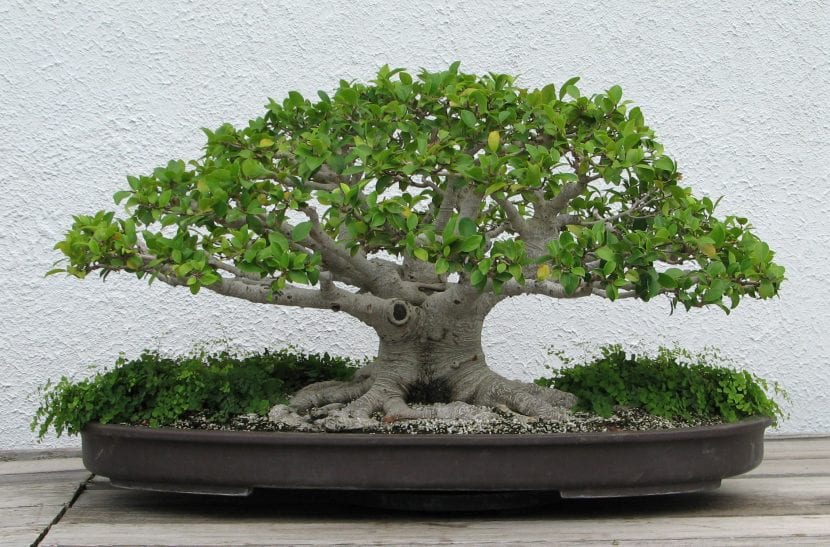
Would you like to have a bonsai but you have no idea how to take care of it so that it does not die? If so, the best you can do is acquire a resistant species, but of course, if you do not know which are the most interesting, you may have many doubts about it. But, calm down! It has a solution.
I'm going to tell you right now which are easy to care bonsai; that is to say, those with whom, located abroad and giving them a minimum knowledge that I will provide you, you will be able to enjoy this world a lot.
Bonsai list for beginners
Evergreen
Buxus or Boxwood

Image - Wikimedia / AlbertHerring
Boxwood is a plant native to Europe, North Africa and West Asia that has a fairly slow growth, which is perfect for monitoring its development. In addition, as it has small leaves, it is ideal for forming bonsai with vertical styles, although it adapts to practically all.
Resists up to -5ºC.
Cotoneaster
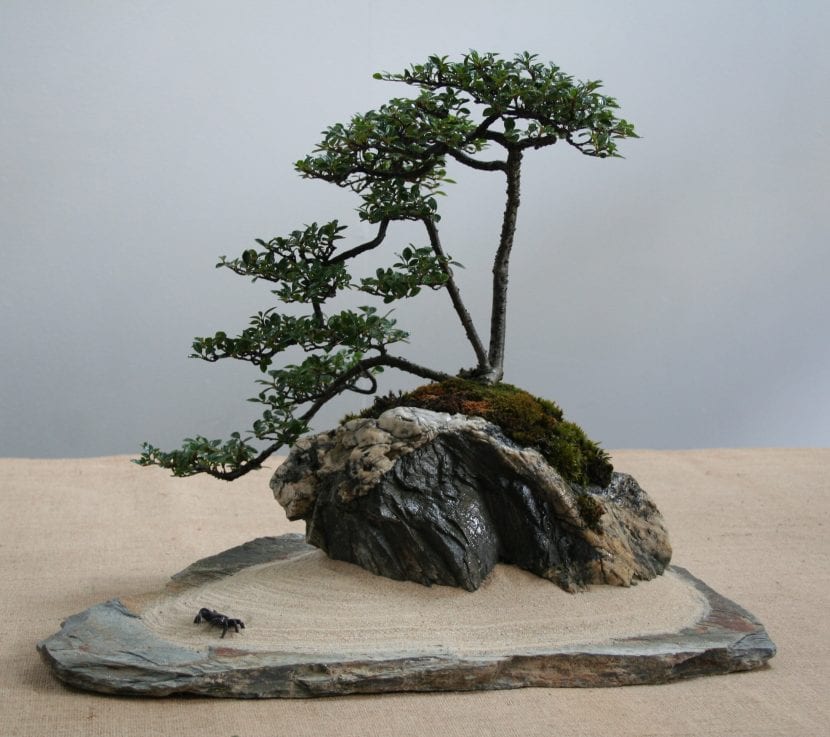
The Cotoneaster is a shrub native to the temperate regions of Europe, Africa and Asia that has an easily controllable growth and development rate. It has small leaves, and also produces very decorative white or pink flowers and some red, yellow-orange or black fruits that also attract a lot of attention.
It resists up to -7ºC, but it is advisable to protect it a little from frost.
Rubber plant

Ficus are trees and climbers native to Asia. It has a slow growth but they are very resistant plants; in fact, they are the best place to start. There are many varieties, being the F. retusa The one that is most recommended to have since it has small leaves and a trunk that thickens easily.
Hardiness will depend on the species. For example, him F. retusa holds up to -3ºC, but the F. benghalensis or f.ginseng they do not support frost.
ligustrum
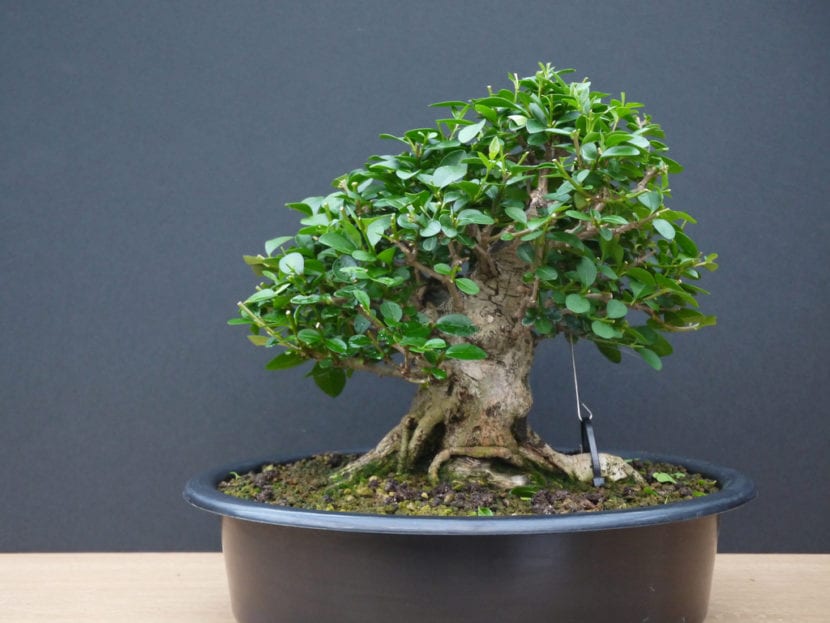
The Ligustrum is a tree or shrub native to China, Japan and Europe that it has leaves of a very beautiful green color. It is usually marketed as indoor bonsai, but the reality is that it does not adapt very well to those conditions, which is why I have included it in this list.
Resists up to -2ºC.
Fallen Leaf
Acer
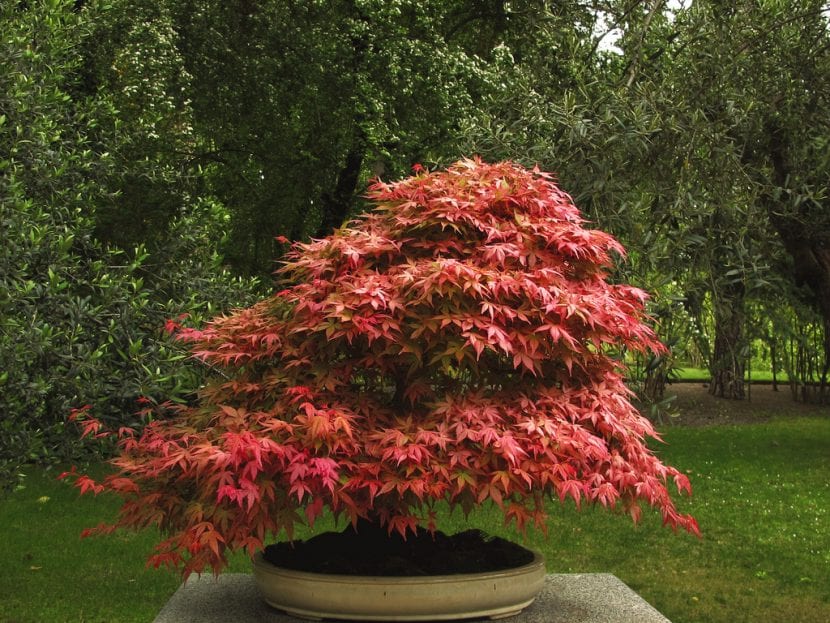
Maples are trees or small trees native to temperate regions of the world, both North America, Europe and Asia. They have very pretty webbed leaves that turn red, yellow or orange in the fall, which makes having a bonsai of them a pleasure.
They resist frosts down to -7ºC.
carpinus
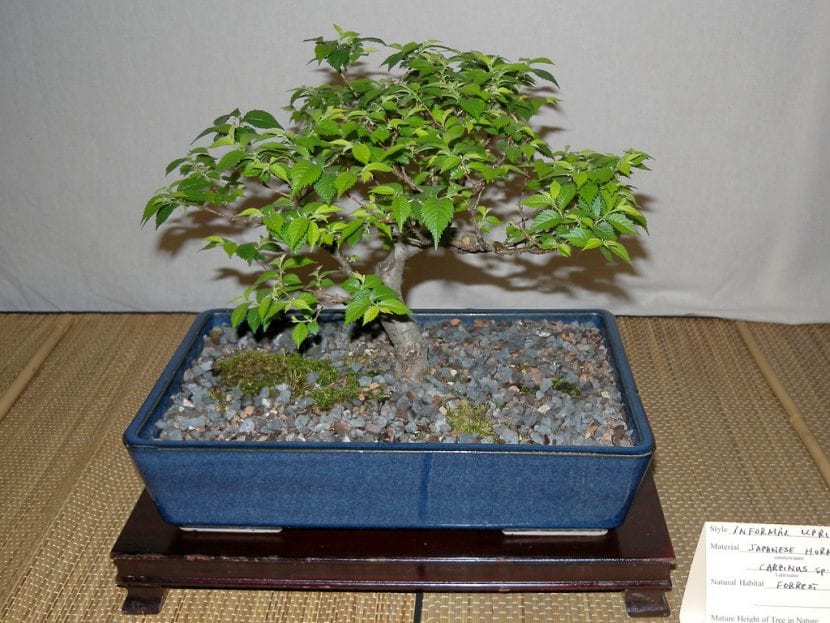
Image - Flickr / Cliff
Hornbeam is a tree native mainly to East Asia that It has very ornamental green leaves that turn yellowish in the fall.. It is a very beautiful and interesting plant for beginners, since it is not difficult to care for.
Resists up to -5ºC.
Punica granatum
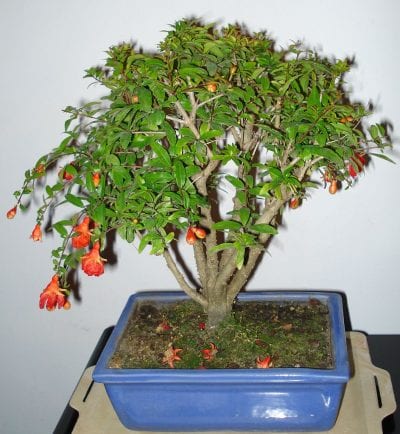
The pomegranate is a small tree native to the Iranian-Turanian region that has very small lanceolate leaves and reddish fruits of about 5cm when they mature. During autumn he dresses in his yellow autumnal outfit before entering its winter rest.
Resists up to -4ºC.
Ulmus and Zelkova
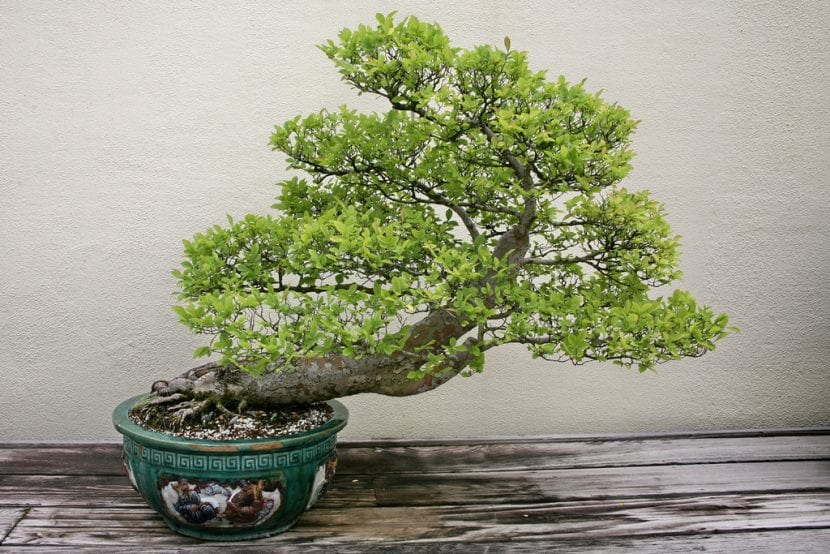
Image - Flickr / Cliff
Elm trees and Zelkova are native to the temperate regions of the globe. They have leaves of about 2-3cm, of a very beautiful green color. Their growth rate is quite fast, and I can also tell you that they are almost indestructible. During autumn turn yellow or reddish depending on the species.
They resist frosts down to -5ºC.
What care do you need?
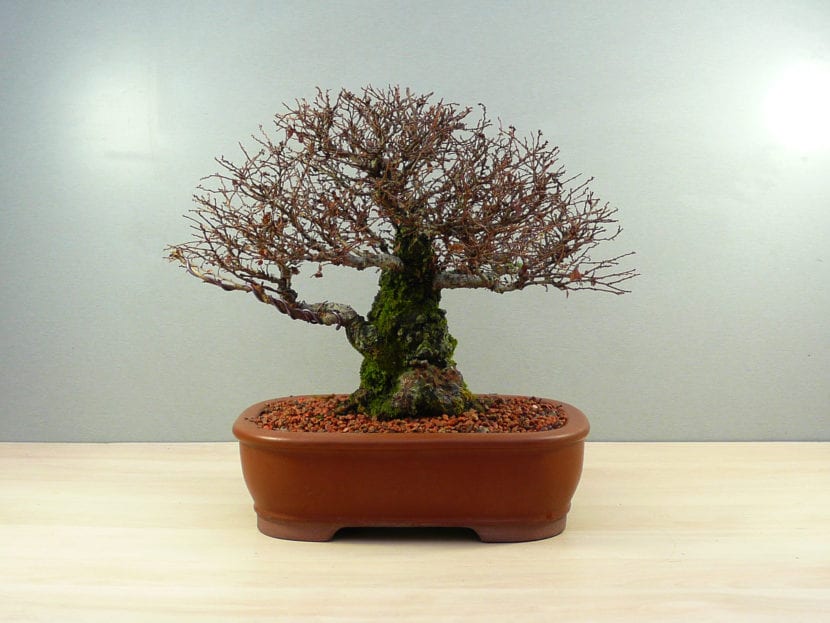
We have seen which are the easiest bonsai to care for, but ... what care do we have to provide to make them really well? Well if you want to know, keep reading 🙂:
- Location: Exterior. Depending on the species, it should be placed in semi-shade (Ficus, Acer, Carpinus) or in full sun (all others).
- Substratum: there is a mixture that will suit all of them and it is 70% akadama with 30% kiryuzuna. You can buy the first here and the second here.
- Irrigation: they must be watered very often, since the substrate loses moisture quickly, especially in summer. Therefore, they should be watered every 1-2 days in summer and every 4-5 days the rest of the year. To do this, you can use a bottle whose cap you have previously drilled, or with a specific watering can for bonsai that you can get here.
- Subscriber: from spring to summer they must be paid with a liquid bonsai fertilizer following the instructions specified on the package. Can be achieved here.
- Pruning: The evergreen ones are pruned at the end of winter, while the deciduous ones can also be pruned in autumn when they have lost the leaf. We must remove the dry, diseased or weak branches, those that intersect, those that grow towards us, and also those that are growing too much must be trimmed.
- Pinching: consists of trimming the branches a little bit -for the green part-. It can be done throughout the year.
- Wiring: only if it is necessary. In spring the wire will be placed and it will be checked weekly so that it does not become embedded in the branch. It is advisable to remove in winter, or when you have already achieved what you wanted 🙂.
- Transplant: they must be transplanted every 2-3 years, in spring.
Has it been useful to you? I hope that from now on you can enjoy the world of bonsai.